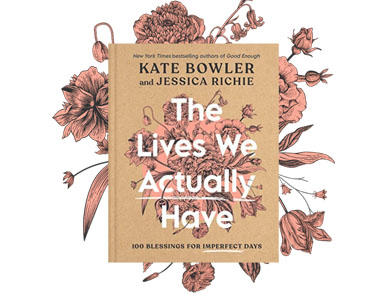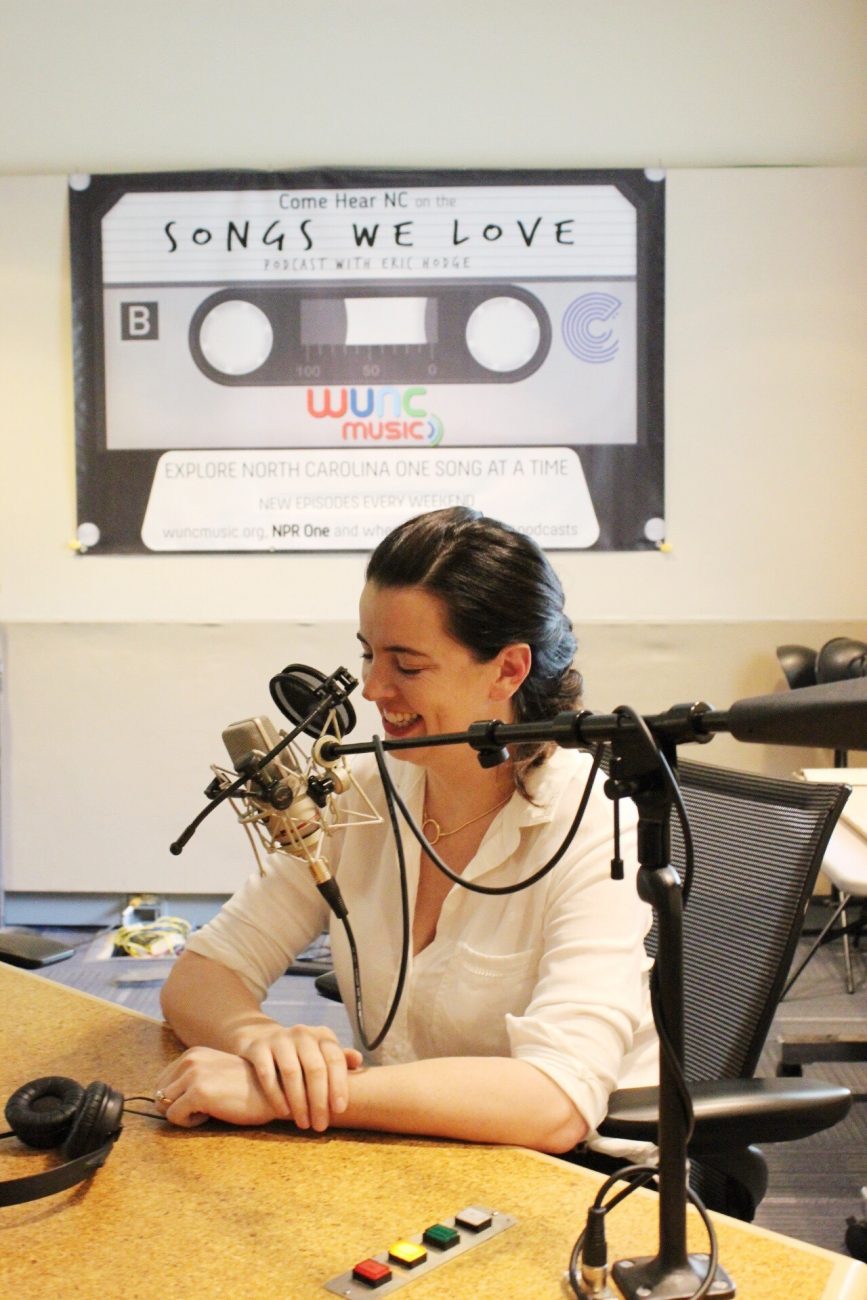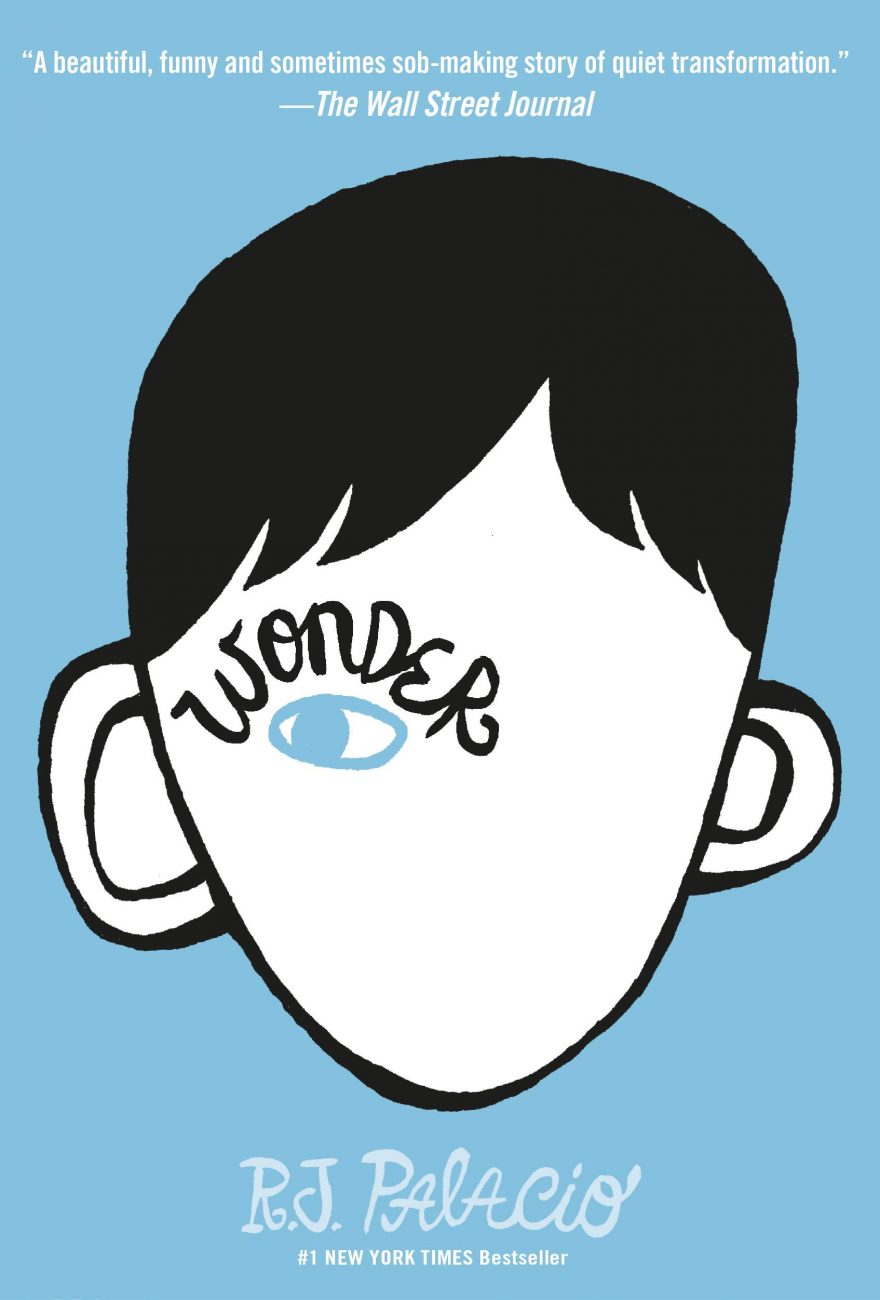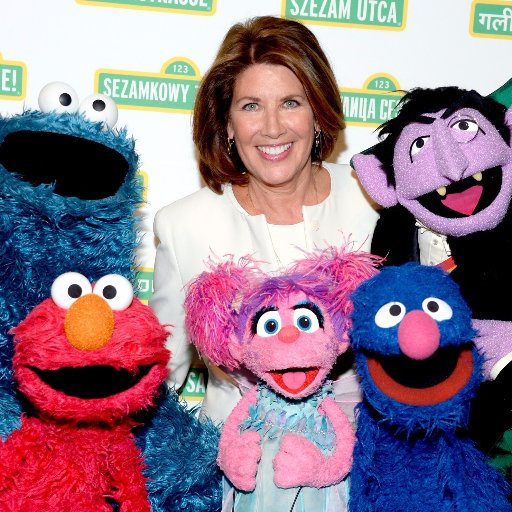Kate Bowler: Hi, I’m Kate Bowler, and this is Everything Happens. Look, the world loves us when we are good, better, best. But this is a podcast for when you want to stop feeling guilty that you’re not living your best life now. We’re not always doing mountaintop yoga. I used to have my own delusion of living my best life now. I’m a Duke professor, wine and cheese enthusiast, wife and mom, Instagram gold. Then I was diagnosed with stage four cancer. That was four years ago and I’m still here. And now I get it. Life is a chronic condition. The self-help and wellness industry will try to tell you that you can always fix your life. Eat this and you won’t get sick, lose this weight and you’ll never be lonely. Believe with your whole heart and God will provide. Keep this attitude and the money is yours. But I’m here to look into your gorgeous eyes and say, hey, there are some things you can fix and some things you can’t. And it’s OK that life isn’t always better. We can find beauty and meaning and truth, but there’s no cure to being human. So let’s be friends on that journey. Let’s be human together.
K.B.: What does it feel like to really live? Some people jump out of airplanes or swim with sharks. Others would prefer for their feet to stay perfectly grounded on the floor. Thank you very much. Some of us seek out the feeling of riding the edge of what is possible, and the rest of us are too tired to think about it right now. In this pandemic season, most of us have had to put our lives completely on hold. And somewhere out there is a life we can’t go back to. There’s a mental bucket list with a lot of unchecked items. So now seems like the perfect time to talk about exactly that. What are the things that make us feel really alive? Do you feel held back from it right now, or is this pandemic and the tight confines of your world matching your personality somehow? Who better to ask than our guest today who specializes in the science of experience seeking? Dr. Ken Carter is a clinical psychologist and a professor of psychology at Emory University. Before joining Emory’s faculty in 1994, he served as a senior assistant research scientist in the Centers for Disease Control and Prevention’s prestigious Epidemic Intelligence Service. He is the author of Buzz!: Inside the Minds of Thrill-Seekers, Daredevils and Adrenaline Junkies. Ken, thank you so much for speaking with me today.
Ken Carter: And thank you for having me. I’m so excited to be here.
K.B.: Well, I’ve been looking forward to this conversation for a long time. I think my curiosity about the role of fear started when I was first trying to wrap my mind around, like the durability of my cancer diagnosis. Like, maybe I’ll be around for a lot longer. And then I started to wonder what experiences make people’s lives feel worthwhile? And I wanted to make sure that I was living each day that I am alive. And one thing that really struck me was how much of that question is wrapped up in fear, like how we manage it and how we live with it. And the people you study have a really special relationship to fear. What is that?
K.C.: You know, it’s really interesting because I stumbled upon this idea of researching thrill seekers, not because I am one and I’m probably the opposite. You know, I am a chill seeker.
K.B.: So, like, you have a bigger category than just like adrenaline junkies. You describe sensation seeking. So like what? What is that?
K.C.: So there’s four different components. So there’s the thrill and adventure seeking. Those are people who are like roller coasters or driving fast it’s the excitement and the danger that beckons that thrill and adventure seeking person. Then there’s experience seeking, that’s sensation seeking of the mind and of the senses. It’s kind of like internal sensation seeking. And then the last two components kind of tell me how much trouble you might get yourself into as a sensation seeker. One is called boredom susceptibility. That’s how easy it is for you to get bored and how irritable you might get if you get bored. Those that score high on it, get bored relatively easily. Those that score low, almost never get bored. Like I scored really low on that. I just never get bored. It’s very rare for me to get bored. And the last one is called disinhibition. This is your ability to sort of act out. Those that score low on that, always look before they leap, those that score, they just sort of leap.
K.B.: So then what kind of people did you talk to for your research?
K.C.: Oh, my gosh. All sorts of different people, you know, so there was this one woman, for example, who decided she calls herself the White Rabbit. She decided that she wanted to travel the world for 300 days and spend no money whatsoever.
K.B.: What?
K.C.: My heart beat started going up, just even thinking about it. And so she actually scores a low on thrill and adventure seeking. She’s not one that wants to go bungee jumping or skydiving, but she loves different cultures. And so the way to immerse herself in those cultures is to be on the ground in those cultures. And she did it. She traveled for 300 days by couch surfing, by staying on different people’s couches and traveling all over the world.
K.B.: Funny. That would stress me so much just to like not be like, but I can’t manage my problem with a hotel, a night in a hotel. How can I?
K.C.: So now I’m the kind of guy like I do those hop on hop off bus tours. Right. So I want to be safe I want to be I want to see what’s going on. And even the thought of that just disgusts her. She wants to be in the homes and taste the foods and eat the most unusual thing. You know, live like the people in the cultures do. And push her boundaries in that kind of way, even if it feels uncomfortable to her.
K.B.: Your experience interviewing like base jumpers and ice climbers, it already seems somewhat terrifying.
K.C.: Yeah. Yeah. And those people it’s interesting because they you know, when you think about those individuals, the first thing that people think about is that they’re risk takers, but, they’re not really. They’re they’re not doing those things because those things are risky. The risk is really the price of admission. They’re doing, the risk is the thing they have to do in order to get the experience that they want.
K.B.: That makes sense.
K.C.: And we’re all like that. There are experiences that we want to have. And the question is how? What is the price that you’re willing to pay for that experience? And sometimes the price is too high and we won’t do it. But for the people that are in my book there, the price is worth the experience.
K.B.: Yeah, I have to admit. I remember watching, like, Free Solo and the movie about the guy who just, like, climbs without ropes.
K.C.: Oh yes.
K.B.: I just remember feeling a little bit, I think maybe if I’m being honest, a bit disdainful because, like, I spend so much of my time trying not to die. So it’s like, okay, could you have a little more respect for mortality? But it sounds like what you’re describing is like recklessness is not the point.
K.C.: Not necessarily and you know, there’s some physiological differences as well. People that are these high sensation seekers, they don’t actually experience fear in that same way. So their body doesn’t is not telling them I’m in a dangerous situation. And so a lot of those people like the ice climbers and the base jumpers. And there’s a wonderful person that I met who calls herself SLAKLINE GIRL who balances on this like one or two inch of rope, sometimes with no harness whatsoever. They don’t experience that much adrenaline when they’re doing those things. Their bodies are not telling them that that’s a dangerous thing to do. So they’re experiencing those experiences they’re at that crux of that of the thing they want to feel, but they’re not all pumped up on adrenaline like we think they must be.
K.B.: That’s interesting. So it’s that like lower cortisol, higher dopamine reshow that you write about?
K.C.: Exactly. So dopamine is that chemical that brings us that pleasure. So they’re experiencing the pleasure, but they’re not experiencing the fear. Someone like me, I would experience tons of fear and not that much pleasure. That’s why I don’t get on roller coasters or drive that fast. I don’t have that combination. But they have a really special combination. And that’s why we actually need people like that. These are the people who are also working in emergency rooms or they are people who are first responders.
K.B.: Right.
K.C.: That we’ll be able to help us when we’re in those situations. But we also need people like me to stop us from doing it.
K.B.: And then to describe it later with careful research, I hear you. I know something like that. Yes, but you’re right. There are professions that are just like, perfect for this. So, yeah, we would totally want those, like high sensation seekers to be the people who need to stay calm in the midst of, like, unbelievable intensity.
K.C.: Because if if everyone was like me and something terrible happened, you were like, OK, we’ll just wait. Let’s just wait till the fire dies down. And then we’ll go in later,.
K.B.: Let’s just do an assessment. That’s so funny. That’s true. Well, we have I mean, because in this, like Everything Happens podcast community, we have a lot of people like that. We have a lot of like doctors and nurses and even people who go into a very intense sort of existential situations like social workers and teachers of high risk kids. And they’re just like they don’t mind being the front lines of terrible.
K.C.: I talked to an emergency room nurse in Europe and she said, I need a break from this emergency room. I’m going to go into primary care nursing. And she was there for a couple of weeks and she hated it. She was like, this is so boring.
K.B.: Do we even want to help people? Never mind.
K.C.: And sometimes what they do is they don’t realize that what they’re doing is they’ll create chaos because they’re used, because that’s where they operate best.
K.B.: The energy kicks in. Yeah. So then, like, what are the great gifts of these high sensation seekers?
K.C.: It’s to be able to to to be in a chaotic situation and to be able to tame that chaos in a calm way. I know I get overwhelmed in chaos relatively easily and I sort of start to break down and I don’t know what to do in those situations. Training can help, like your training kicks in. But we need people who can be calm and cool and collected. You know, I’ve talked to different first responders who will say they’re in those chaotic situation, and a lot of them will say time slows down. They’ll know exactly what to do.
K.B.: I find that, you know, when you when you’re giving the description of the ability of the sensation seeker to sort of live inside the chaos a little bit, it kind of help make sense of the very weird reaction I get where the worse the news gets. So if I’m in like a very stressful hospital situation or something, I find I get calmer and calmer, where I am, I think I’m just trying to I can just if I slow it down, it sort of feels like there’s asteroids everywhere and I can just sort of slowly try to figure out my way through it. I’m just wondering, like, what, if any, relationship is there between, say, survivors of trauma and sensation seeking? Does it make you more willing to step into the fray or or less willing, do you think?
K.C.: One thing that I want to make sure that sort of distinguishes that for for people that are experienced trauma. One of the symptoms of PTSD can be recklessness. And there’s a distinction between that as a symptom of PTSD and a high sensation seeking personality. It’s high sensation seeking personality is something that would be a personality trait that a person might have had for their entire life. The recklessness that might come from trauma would be something that might suddenly appear.
K.B.: I see.
K.C.: For people that are experiencing chaos and the idea is to resolve the chaos, is that you that you know the enemy. Right? You’re in a middle of a chaotic situation and you know exactly what to do. I need to figure this out and find my way out. And sometimes when there is there are so many little things going on and it feels like a thousand paper cuts, you don’t know what to do to get your way out. Like what’s going on right now, there’s not a thing to do to find your way out.
K.B.: Yeah. The fear is inchoate in that way. It’s just like, yeah, it’s everywhere.
K.C.: Like, oh, all I need to do is to find a vaccine.
K.B.: I was just going to say right in my lavatory, next to the kitchen.
K.C.: I may have little tasks to do each day, but the big task is something that I cannot control. And so when people ask me how I am, I often tell them I’m doing fine within the walls of my house. I think that what some people do is they they control the walls of their home and they and they may create chaos in the walls of their home in order to have control over something. The problem can be, though, that that they don’t get to experience any calmness at all. But for someone like me who’s a low sensation seeker, I crave that calmness, that peace and that quiet. That’s where my joy is. I have one of those. I got one of those like photo frame things that at my house because I realized that all of my photos were trapped in my phone and I never get to look at them. And I sort of loaded it up and with like 10 years of photos that pop up and even being able to walk by, I’m like, oh, yeah, that was the time that I went here. Even that small joy of looking back at photos of friends and family, that brings me that sense of awe and joy. I got 40 photos of sunsets.
K.B.: No, no, now, you’re sounding like my father in law. He’s like, would you like to see my Chimney’s and Windmill’s powerpoint presentation? I I’ve set it to music.
K.C.: Exactly, that sense of awe and joy to their world. And why keep that trapped in your phone? It should be somewhere where you get to experience it as much as possible.
K.B.: My sister does something really sweet with that when she’s in a moment that she’ll really want to remember later. She’s she says, oh, I just send myself a postcard. Oh, I was like what’s that like? She’s like, oh, I just like I take a second and I send it to my future self. And I just remind myself, like, you know, from the moment you’re sitting in, it sounds like your kids are yelling in the other room and something has disintegrated with this board game. But from where you’re sitting, this is a miracle.
K.C.: That’s awesome.
K.B.: I really like it.
K.C.: I used to say myself, thank you cards.
K.B.: Stop it! That’s so cute. What would you thank yourself for?
K.C.: I would mail them like with those a little services, where you can mail cards to other people. But I would write it down to myself like, you know, you did a really good job at, and I would mail them to myself.
K.B.: Ken, I love that!
K.C.: And it would come like eight days later. And I would forget, I would get busy and I’m like, oh, wait, whose this card? It’s for me.
K.B.: Wait, a minute, I’m so thoughtful.
K.B.: I have a bulletin board like that where I put up, like, beautiful, lovely. Like, my older sister painted me a little watercolor of an ostrich that says, hey, I love you. And like, I want more ostriches in my life.
K.C.: So when I have students who ask me to write them a recommendation, I will say you do it on two conditions. Number one, you tell me if you got the job. And number two, you must send me a postcard.
K.B.: Yes, you are single handedly bringing the United States Postal Service back into full glory. Well, you’re creating a different relationship between the future and the present. You’re like, I need this to matter too. And I really like that. That’s a good investment.
K.B.: You have a wonderful online quiz about this. I recall reading that you scored an eight out of your own quiz that goes from 1 to 40. I scored a twenty nine. So medium reckless.
K.C.: I have not met many people who score as low as I have. And I tell my students a story and they they don’t believe it. But back when you had to I was in line to get the first iPhone. You had to wait for several hours to get it. And my students can’t believe that I couldn’t, I didn’t sit there with my phone waiting to get the phone, like, what would you do for four hours waiting to get a phone, like you couldn’t play with your phone? For me, I can just sort of wait. I don’t get bored. Other people, if you told them, could you sit here for ten minutes and I’ll be back there. And then they’re like and do what.
K.B.: And then you’d find me dead because I’d be so bored. Do any factors change sensation seeking people? Is it like, does it go away with age, does it go away with having more independence?
K.C.: Yeah, there are a couple of things that can change over time. So one is biologically, we sort of naturally change. So there, three of the four different components will will decrease as we get older. The only one that doesn’t get lower as we get older is boredom susceptibility. That tends, if you get bored now you’ll always get bored as you get older.
K.B.: Yeah, that sounds right.
K.C.: But there is another factor I talk a little bit about in the book that I call anchors. As people get more responsibilities, as they get older, children, spouses and partners. They may have anchors that sort of pull them back from some of those activities, especially the thrill and adventure seeking kinds of activities. So if you have a partner or kids, for example, you may decide to not do some of those kinds of activities.
K.B.: One of the things that’s on my mind a lot as our culture learns to manage the uncertainty inherent in the pandemic, is that there’s this sort of underlying question about whether people are able to increase their tolerance for fear. I’m just wondering if your research gives you any, guess, or hypothesis about whether in the face of a genuine threat, people can build it as a as a muscle, and like learn to to look at it with a little more, I guess, resiliency.
K.C.: You know, there’s this concept that is called habituation, which is the idea, the more you do something, the less power it has over you and most emotions will habituate. Like like, for example, I don’t like scary movies. The last scary movie that I saw was The Ring. I’m not sure if you saw that.
K.B.: Yeah. It was totally terrifying.
K.C.: It was really terrible. I didn’t sleep for a week after watching the movie. And so if you watch The Ring once, it will be terrifying but if you watch it 40 times, it won’t be this horrible the fortieth time as the first. That’s the magic of habituation.
K.B.: But then if you show the movie The Ring to someone else, then they too will die. Right? Isn’t that the premise of the movie?
K.C.: My students don’t get, they’re like, wait, you rent it? Like, what does that mean? Like, you know, you have to rewind. So therapist to use this sometimes when they’re treating PTSD and other kinds of trauma. Fear, it can habituate. And interestingly, high sensation seekers habituate a lot more quickly than average and low sensation seekers.
K.B.: Really?
K.C.: So something that’s frightening to them, they can get used to that fear much more quickly.
K.B.: Yeah, to like assimilate it into the sort of neurological world they can live in.
K.C.: Right.
K.B.: So the other day, my six year old just learned about volcanoes like didn’t know that somewhere out there, at this moment, magma from the Earth’s core is somehow making its way to the surface. And like he was just like, what? Like, why is no one told me, why has no one brought this to my attention? He couldn’t sleep for two days. I was like, no, no. OK. OK. And now that I’m thinking about it. Volcanoes are terrifying.
K.C.: Twenty minutes before I talked to you, I saw this thing about the huge horde of flying ants that could be seen from radar.
K.B.: No. No.
K.C.: Yeah. And so there’s this. We’ve done this number on ourselves. I feel like in some ways this is sort of that one of the curses we have as our generation is that we know too much.
K.B.: Yeah. That’s right.
K.C.: We not only know about everything that’s around us, we know things from towns away, cities away, years past and, you know, and countries away the flying ants, I don’t remember what country it was that the flying ants are there. But that’s a new thing to be worried about. And so now we’ve got to habituate the flying ants and whatever happened to the murder Hornets?
K.B.: Oh I know, I was just thinking that you’re totally right. The world is full of things to be terrified of.
K.C.: So many people can sort of are in this constant state of sort of mild anxiety around that. And if you’ve talked to people recently with what’s been going on these last couple of months have been so tired. And I think it’s the same kind of thing that a lot of people with anxiety experience a lot that exhaustion that they experienced with anxiety.
K.B.: That makes sense, I guess part of what I really like to about what you’re describing, like based on how we’re wired, is like what pushing ourselves feels like.
K.C.: Yeah.
K.B.: And that like for people who who are low sensation seekers that, like so much of of the worlds they can build are like they go deep. They can run really deep. And then when they choose to be able to extend that, that that requires like a lot of courage on their part. I get beautiful mail from people where, like the big encounter with fear is that they decided to, after serious loss, like to get married again and then to fold someone else into the habits of their life. And then that is like pretty freakin bright.
K.C.: And I think sometimes the other person that they’re with may not know what that meant to them, especially if they’re an introvert. Knowing, you know, they’re there should be a whole list of introvert compliments. Being with you is like being by myself. Like an insult to an extrovert. But it’s probably the greatest compliment that any introvert, I can relax when I’m with you. I don’t I don’t have to watch what I say when I’m with you. But if you said that to an extrovert, they would probably burst into tears.
K.B.: And then the sensation seeker cards would be like, loving you is like jumping out of an airplane again.
K.C.: Exactly, I feel like jumping out of an airplane when I’m with you.
K.B.: Because of, I mean with you.
K.C.: Right. Right. Like, why would you say that to me? Right.
K.B.: Yeah. Yeah. Cause I do miss like, the bigness of how the world felt. I always miss, I miss that feeling of when I have my carry on luggage, and I’ve already been through security and I’m just like I always just have this little song that I think to myself. I’m just so happy. Like, the world is open. And now the world is small and like, the world is small now. And the world was small, you know, in cancer, and the world, the world just get small at different times. And I think like so much of what I hear you calling us to is is a way of trying to live authentically inside the limits that we’re given right now.
K.C.: It’s all still there. And for just now, maybe live vicariously with the stories. And that’s what I did when I was talking to people, which is sort of like. So you went to taste Fugu, which is a poisonous puffer fish.
K.B.: Yeah.
K.C.: Why did you do that? Let’s find out why. There’s a whole story behind that. And to me, that’s why story, and this is what you’re doing now. That’s why storytelling is such a beautiful thing. And and to unpack all of that. And until we can get back out there, what you’re doing now is a way of preserving that for other people and unpacking it. So you’re, it’s still a way of traveling. And so I. I encourage you to do it.
K.B.: Well, I accept. And I like that, I like that we got to go someplace together today. That was nice.
K.C.: And maybe because I’m a low sensation seeker, it’s a beautiful way to travel.
K.B.: And to be able to send ourselves thank you cards from here. I really like that.
K.C.: You should try that. You will.
K.B.: I will. You know I will. Oh my gosh, thank you so much for doing this with me today? This was such a joy.
K.C.: Yes. Thank you so much. It was a pleasure to travel with you today.
K.B.: OK, your turn. What does it feel like for you to really live? Do you crave the adrenaline rush or do you prefer the rhythms of a normal, predictable day? This pandemic can bring us all to a place of fear and exhaustion, boredom and despair. Some people are trapped at home and others are trapped in the danger of a world on fire. As Ken’s work reminds us, there is still a world there to discover. Some people will find it on a high wire or downing something with tentacles. Others will find it in the emergency room caring for a patient or as a teacher, making plans for next year’s class. We can’t live without fear because we all fear different things. Discomfort, talking to strangers, heights, getting sick on the job, putting our kids back in school in a pandemic. Fear is there, and it’s not simply our perception. It’s the presence of danger. We are desperate to assess and then to manage. And as we do, may we allow fear to remind us of that true hard thing. Our lives are full of things worth losing. The trick is not to ignore fear. The drama of living is to decide, now that we know that it’s there, how we might live alongside it. And as we try to do this hard work, may you get filled up with all the joy and contentment humanly possible in this world of constraint. As Ken says, may you find contentment within the walls of your house. Until we can fling open the doors and remake the world again.
K.B.: This podcast wouldn’t be possible without the generosity of the Lilly endowment. Huge thank you to my team, Jessica Richie, Keith Weston, Harriet Putman and J.J. Dickinson. OK, but for real, come be human with me. Find me on Instagram or Twitter at katecbowler. This is Everything Happens with me, Kate Bowler.

















Thanks for another great conversation.